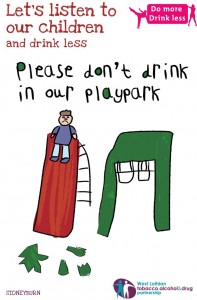Enter, if you will, the parallel universe of the traditional local authority careers advisor, where nothing bears much relation to a young person’s dreams or talents.
In this spooky alternative reality, I have followed the 1985 suggestion of my school-based careers advisor, ditched my “unrealistic” dream of becoming a journalist and am now a teacher.
Mr Saba Salman, meanwhile, didn’t become a documentary filmmaker but stuck to the advice of his careers advisor and became – ta daa! – a careers advisor! And among my friends I count an abattoir worker (she wanted to be a vet but the computer said ‘no’), a prison officer (she’s actually a showbiz journalist) and a lawyer (she said she was shy but liked languages and writing – she’s now a European social policy consultant).
This parallel universe is, of course, based on events some two decades ago, but it’s incredible that so many people still recall the terrible advice they had – and it’s coloured their image of the entire profession.
My nice but singularly insipid adviser informed me that journalism was “a bit difficult” to get into and refused to organise work experience at my local paper on the grounds that I’d be turned away from such a competitive profession. Credit to her that instead of finishing me off completely by yelling “HEY LOSER! YOU’RE ONLY 13 AND YOU’VE YOUR WHOLE LIFE AHEAD OF YOU BUT – BEHOLD – I CRAP ON YOUR DREAMS!”, she comforted me with the affirmation that I was “a good all rounder” who would be suited to teaching.
Now I take my hat off to teachers; I know some inspiring ones working in challenging schools, and it was my brilliant English teacher who supported my interest in writing. But I had a clear idea of what I wanted to do – and teaching wasn’t it.
Mr Saba Salman had a similar experience. After explaining that he liked reading, writing and photography, he was inexplicably told to work in careers advice. Meanwhile my pet-friendly friend punched her likes (people, animals) into a computer programme during her advice session and was told to work in a slaughter house…and so the stories go on.
Was there a massive yet unreported national shortage of teachers, careers advisors, prison officers and abattoir staff in the mid-80s? Were well-meaning careers advisors attempting to rebalance the economy? Or was the service just plain rubbish?
I ignored the patronsing old boot who misadvised me, concluding that it was she who was difficult, not my chosen career. But how many of my peers took the advice along with an unsuitable career path after someone rode roughshod over their dreams?
The careers advice has changed since I was at school. Known as Connexions, what it does well is to target the young and vulnerable with information on careers and personal issues. But its shortfalls were documented in a report from the CfBT Educational Trust last year and Connexions offices face massive job losses as a result of public spending cuts.
So it was with interest that I noted the recent news that the government is to take careers advice responsibility away from councils and launch its first all-age careers service building on Next Step and Connexions. The all-age service launches in 2012 and aims to offer seamless and universal careers advice.
Connexions will disappear. Councils will still advise vulnerable young people, but with what funding and under what auspices is unknown- and that might impact on the disadvantaged.
However, the Department of Innovation, Business and Skills acknowledges that careers guidance is at the heart of increasing social mobility. The pledge that schools will be under a legal duty to secure independent, impartial careers guidance for students is interesting, as is the option for a kite mark for the best career guidance and a register of providers meeting the highest standards.
The new service should include a strong online presence as young people are increasingly looking to the internet for advice. The online youth support charity YouthNet, for example, runs a rich, web-based careers advice resource The Site with a valuable ‘ask the experts’ option.
And the service could help older workers. Research published today by the Employers Forum on Age (EFA) and Cranfield School of Management describes the stagnation in the careers of many over 50s. With the fixed retirement age being abolished in 2011, and the state pension age rising for both men and women to 66 in 2020, many people might look for a career change later in their life.
Of course unless the job market picks up, the recipients of this world-class careers advice won’t actually have anywhere to actually launch their careers – but let’s not quibble about that for now.
And finally, Mrs West Sussex County Council Careers Advisor c1985, it is to you I dedicate this blogpost (a form of journalism no less). Because it is with no thanks to you that I am here today. Cheers.


 Above, a poster designed by a child in Stoneyburn, West Loathian, speaks directly to the community.
Above, a poster designed by a child in Stoneyburn, West Loathian, speaks directly to the community.